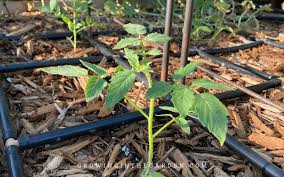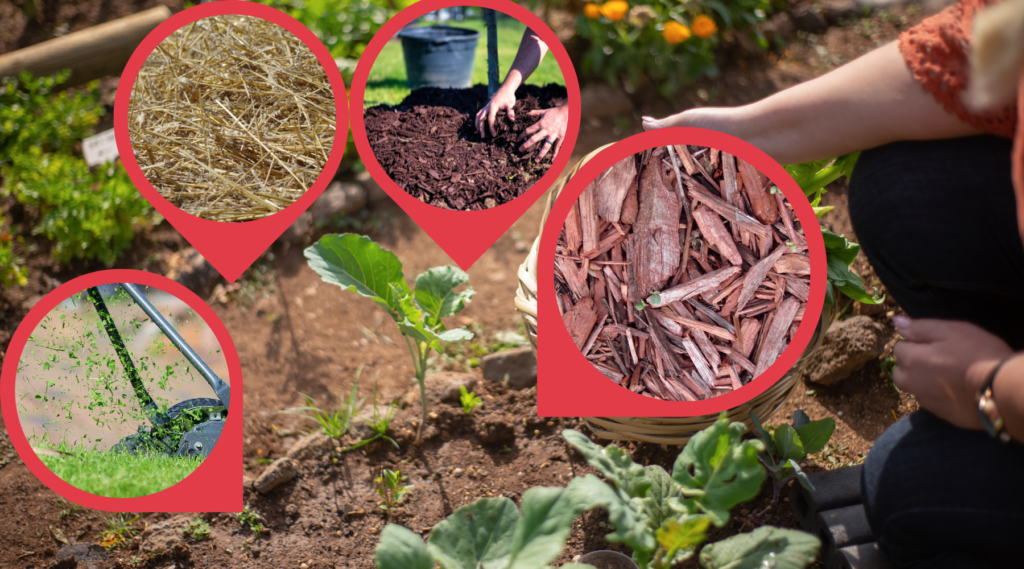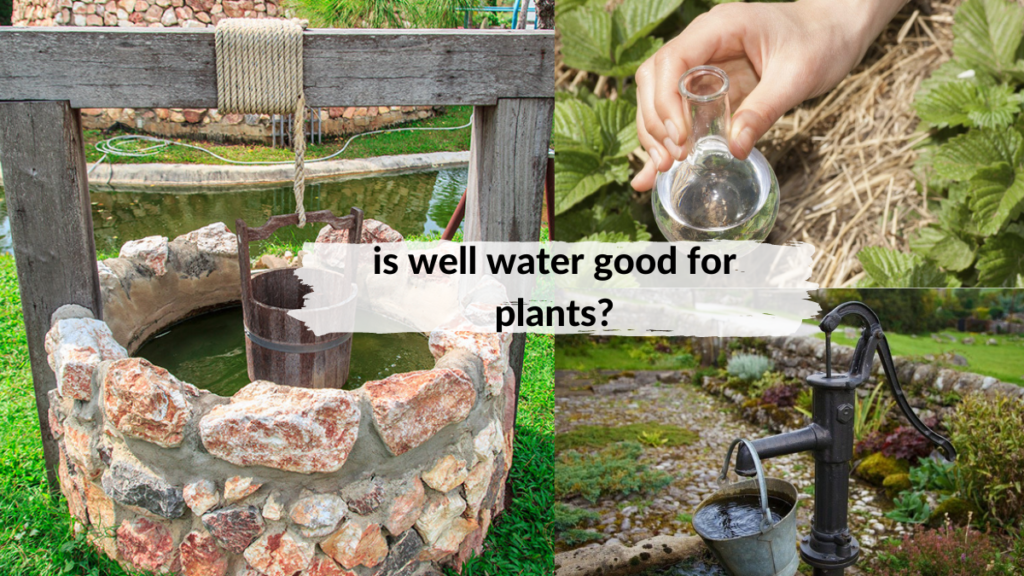Some may assume that growing tomatoes is somehow overwhelming, this is true especially when you think of growing tomatoes in Arizona, a low desert area.
One of the many reasons why people are starting their gardens is the taste of homegrown tomatoes. It is said that in the United States alone, more gardeners are growing tomatoes than other vegetables in their garden.
If you are one of those people who are wondering how you can grow tomatoes in the low desert Arizona and other hot climate areas, read on and we will help you get started.
learning when to transplant seedlings
If you are aiming to harvest in early summer, the best time for transplanting tomato seedlings is mid-February. It is not easy to grow tomatoes in the desert. Some of the factors that may affect the growth of the tomato plants are:
· Watering requirements
· Soil problems
· Plant nutrition
These factors all contribute to the good production of your tomato plants. But just like many gardeners, it is possible to get good harvests once the needs of plants are met.
For you to produce good tomatoes in the low desert, you should get them planted early and expect to gravest them even before the summer heat sets in. It may seem worrisome to plant as early as February can still be cold but following a mid-February planting routine for tomatoes is ideal to achieve maximum production.
If you are planning to grow tomatoes in garden soil, you might encounter some challenges since these plants are not well adapted to Arizona. In case these plants were adapted to the climate in Arizona, there would surely be a field-grown tomato industry in the area.
temperature plays an important role in the growth of tomato plants
Due to the high temperatures in Arizona, especially during summer, soil alkalinity, and the heat of the sun, it is a must for gardeners to contend with these problems to produce good tomatoes. Tomato plants can only set fruit if the daytime temperatures will not be more than 90° F and when the temperatures at night do not go over 55° F.
Because of the temperature limitations, the total production per season will be a bit narrow and gardeners should make use of this time to get good crops.
the proper way to plant tomatoes in your Arizona garden
The proper way to plant and grow tomatoes is to start planting 6-inch transplants once mid-February starts in the low desert areas. For those residing in cooler higher elevation areas, it is recommended that you start setting out the transplants in mid-March.
If you prefer planting them from seeds, you can do so. However, you should know that it needs about 6 additional six weeks before transplanting if you want to plant in pots, so the tomato plants will germinate to the right size.
This means that you need to plant the seeds on the ground or in pots in January with enough cold protection to make sure that the plants will be ready for fruit production at the earliest time.
how long do different tomato varieties produce fruits?
It takes a different length of time for different tomato varieties to produce fruits. Look at the information below to know the varieties you can plant in your garden.
short-season varieties
These varieties can produce fruit in about 70 days, and these are considered best in areas with hot climates. Some varieties that fall into this category are the following:
· Cherry-type varieties
· Early Girl
· Rosa and Columbia (hard to find varieties)
longer-season varieties
Due to the approaching hot weather, these are quite risky and will sear fruits that develop later. Among the popular varieties in this category is Celebrity. It is a popular variety that is proven to be consistent every year. Many tomato gardeners love it because it grows quickly, has a good setting capability, and has a flavorful fruit.
larger fruit varieties
Some of the varieties that belong to this category are Better Boy and Beefstake are not recommended to be planted as they only produce more vines instead of fruits. Some gardeners may successfully coax these varieties to fruit more, but it may not meet expectations given the climate in Arizona.
improving the chances of growing tomatoes successfully in Arizona
To combat the summer heat, all tomato plants must get off to an early start. Before planting, it is necessary to prepare the soil properly, timely irrigation must be done throughout the growing season and good nutrition should be provided to ensure that the tomato vines will be productive even in a short time.
Tomatoes need good light to produce effectively. However, you must protect them from the harsh and burning sun during hot summer. Most successful gardeners would choose a spot with an eastern exposure when they plant their vines. This way, the plants will get enough sunlight in the less-harsh morning hours and are protected from intense heat during the afternoon.
If you want to plant tomatoes out in the open, you should set up a shade cloth of burlap or nursery fabric over your plants. This will protect the vines as well as the fruit during the hot afternoons. Avoid ruining your plants by planting beds that are next to masonry, especially with western exposure.
spending time and effort in preparing good soil when growing own tomatoes
Spending time and efforts in good soil preparation encourages deep-root system development that is necessary for providing nutrients and water during the plants’ fruiting season. Since desert soils can become compacted easily, plants usually have difficulty in developing enough foundation necessary for later growth.
Spade or till down the soil to about 12 inches to loosen the soil. Work in about 2 to 4 inches of composted manure to prevent the soil from compacting again after the following irrigation. Aside from keeping the soil moisture and nutrients for the roots, remember that it also needs air. Compacted soil limits the availability of all the essential factors for successful growth. With the lack of these essentials, your tomato plants will have a stunt and slow development.
Good soil fertility must be maintained. New crops will require enough nitrogen to grow, but too much of it can burn young and tender roots and cause slow development.
During the final preparation of the soil and before you can start planting, it is recommended that you add ammonium phosphate fertilizer. This will allow plants to get enough amounts of phosphorus and nitrogen as the season begins. You can add nitrogen little by little throughout the growing season to make sure that it will not run short of it at critical times. It is recommended to add nitrogen during irrigation sessions. Water will carry it down the root system.
weather protection for your tomato plants
Aside from the scorching heat of the sun during summer, you should also know how to protect your tomato plants from the cold weather. One way of doing so is placing a tall tomato cage that you can create using construction wire around the plants. Use clear plastic to cover the cage to give it a greenhouse effect.
Make sure that the plastic is loose enough to ensure that there is enough air circulation but is tight enough to prevent the frosty air from affecting the plant.
When the warm days come, simply loosen the plastic or you can remove it to prevent too much heat from burning the plants. The plastic cover must only be placed long enough to avoid frost damage. Once the risk of frost end, you should remove it.
There are other devices that you can use for cold-weather protection and can be found in garden stores. Some people utilize water-filled milk containers to give early warmth and protect small plants. The water inside heats up when exposed to the sun during the day. The warm water then provides heat to the plants during the cold hours at night.
putting proper irrigation
You should know that proper irrigation is an important part of growing tomatoes. Fruit cracking and blossom-end rotting on the fruit are results of growth spurts and then followed by growth checks. Growth checks are caused by irregular irrigation and heat.
Always make sure that soil moisture is enough throughout the growing season. However, see to it that you do not keep the soil too moist as it may cause the roots to rot. In managing your tomato plants, deciding whether to irrigate or not is always an important step.
It is recommended that the soil around the roots of your tomato plants is moist but not to the point that it is sloppy wet. For supporting the process of transpiration, a life process of plants to keep themselves cool, the stems and lush leaves of the tomato will need ample amounts of water.
Since the roots are picking up water constantly, it only requires regular replenishment of supply. The duration and frequency of irrigation will depend on the type of soil where the tomato plant is growing. If you have sandy soils on your property, then you need to know that frequent irrigation is a must. This can be daily or alternate days. On the other hand, if there is clay soil, weekly irrigation will suffice.
when should you irrigate?
For you to determine when you should irrigate, the following are things that you can do:
- Using a probe with a soil auger or a shovel, dig down to as deep as around 6 inches and check the levels of soil moisture.
- Get some soil and form it in a tight ball. Squeeze it and if a wet outline is left on your hand, you should hold off your irrigation schedule. Hold it off until you feel that the ball of soil is cool to touch and starts crumbling at the edges.
Make sure that when making the irrigation, the length must be enough to fill the entire sone of the roots of your plants. Tomato roots are mostly found in a band that is approximately 18 to 24 inches from the ground level. Every irrigation must send water as deep as 24 inches.
You can check the moisture depth using a shovel or probe. Using a probe, it will slip into the moist soil and stop abruptly once it reaches the dry soil. To measure how deep your irrigation should be, simply place your fingers at the soil level before you pull out the probe.
To control the concentration of naturally occurring salts found in the soil, you should water deep enough so that water-soluble chemicals will leach down and not stay in the root zone. Remember that this is an important thing to manage because tomatoes are sensitive to high salt levels in both soil and water.
It is possible to grow fresh tomatoes on the vine even in the desert. Just make sure that you completely understand the basics of plant care.
tips to grow tomatoes in Arizona successfully
If you are eager to grow tomatoes in low desert areas like Arizona, the following are some helpful tips that you should keep in mind:
1. plant tomato seedlings as deep as possible
Planting the seedlings deeply will encourage the growth of a more extensive root system. Thus, resulting in a healthier plant.
When planting, remove 2/3 of the bottom leaves of the tomato transplants. Dig a deep hole or a shallow trench depending on the depth of the planting bed. Plant the seedling with only the top leaves showing above the ground.
Roots will simply grow along the whole stem. Keep in mind that it may seem like nothing is happening with the tomato plant after transplanting, but it is starting to grow roots.
2. mulch the tomato plants
For mulching, you can make use of straw leaves, pine needles, or compost. These will all help in reducing evaporation and insulating the soil from extreme cold and hot temperatures. This means that the soil will keep an even temperature.
This will also help in controlling weeds and preventing plants from competing with weeds for nutrients and water supply.
3. add support to the growing tomato plants
It is a must that your tomato plants grow upright or vertically. This will prevent the stems from breaking because of wind or heavy fruits.
Place trellises around tomatoes to keep the leaves from touching the ground and protecting it from diseases. This will also make harvesting the fruits easier than harvesting off the ground.
4. be alert and look out for pests
Planting tomatoes in Arizona does not mean that the heat will keep pests away from the plants. You should watch out for caterpillars and immediately pluck them off. Feel free to wear gloves in doing if you do not want to touch the pests.
If you see aphids, they will just go away without treatments. When there are spider mites or whiteflies, you can use neem oil or insecticidal soap and apply it to the bottom of the leaves. If you are worried about birds, you can make use of bird netting.
5. make use of raised beds
Because of the hot climate, the soil in Arizona may not be the ideal type to be used when growing things. Though a clay soil type may come with some pros, it may always lack organic matter. It will be difficult for tomato plants to absorb their much-needed nutrients. This means that planting and growing in the ground can turn into a challenge, especially for beginners.
One way to grow tomatoes successfully is to make use of raised beds. A raised bed will give you the ease of preparing the ideal soil mix for growing tomatoes in your garden.
If you are not familiar with building raised beds, below are some articles that can help you:
– 4 x 4 garden plan: easy and lasting 4×4 garden plans for any space
– the ultimate guide to DIY raised garden bed plans
Make use of these tips to successfully grow any tomato variety that you like in your garden. If you are well-informed in starting to plant tomatoes, you will eventually learn how to grow more plants or crops.










